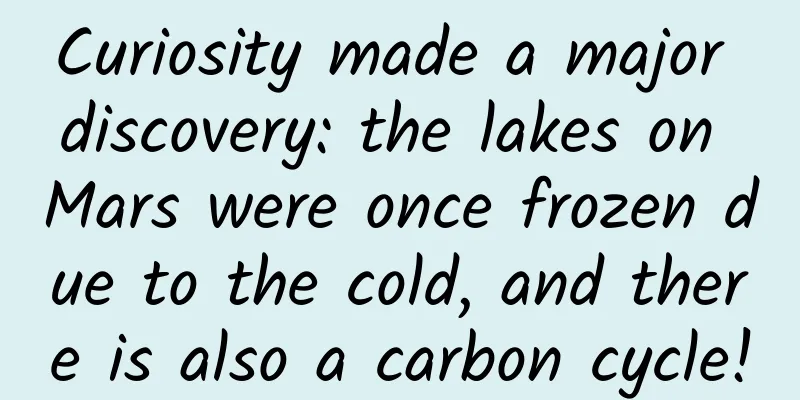Can eating more "blue foods" such as seafood solve the human food crisis?

|
Written by: Zhu Hengheng Editor: Wang Xinkai Layout: Li Xuewei On September 23, 2021, the United Nations Food Systems Summit was held online during the United Nations General Assembly in New York. One of the main goals of the meeting was to eliminate hunger by 2030. Statistics from the World Food Programme show that there are still nearly 700 million people suffering from hunger in the world, and 250 million people are on the brink of starvation . Unless countries around the world take strong measures, 840 million people in the world will suffer from hunger by 2030. In fact, blue foods, including fish and shellfish as well as various animals, plants and algae living in seawater and freshwater, provide protein and nutrition for 3.2 billion people worldwide, and more than 800 million people rely on them for their livelihoods. However, blue foods have long received little attention in food policy discussions. To this end, the Stockholm Resilience Center, Stanford University and EAT launched the Blue Food Assessment Action, which brought together more than 100 researchers to explore the role of aquatic products in the healthy and sustainable development of human food systems. The research results were divided into 5 articles and published in Nature magazine and its sub-journals. Image | Nature Cover: Blue Food (Source: Nature) Blue foods are nutritious and could prevent 166 million people from malnutrition Malnutrition persists worldwide and takes many forms. Among children under 5, 149 million (22%) are stunted and 45 million are hungry. Among adults, 2.1 billion are overweight or obese. Nutritional deficiencies are the main cause of this problem. In order to solve these problems, many countries around the world have held countless food policy discussions, but these discussions are limited to land-based food production. Because in the eyes of most people, aquatic products are seafood and fish, which can only provide protein. Therefore, the nutritional value of aquatic products has been seriously underestimated for a long time. (Source: Pixabay) To verify the nutritional value of aquatic products, Dr. Christopher Golden and his colleagues published an article in Nature, which systematically analyzed the nutritional components of 3,753 aquatic animal foods and found that the content of seven nutrients, including omega-3 long-chain polyunsaturated fatty acids, vitamins A, B12, calcium, iodine, iron, and zinc, in upper-level fish was significantly higher than that in beef, lamb, chicken, and pork. Then, by combining food nutrition data with food system models, the researchers proved that if global aquatic product production increased by 15 million tons by 2030, global aquatic product prices would drop by 26%, and 166 million people would be free from malnutrition. Women and children in particular are three times more likely to benefit than adult men. Developing blue food farming can reduce land and water use Food production is one of the main drivers of environmental problems, emitting a quarter of the world's greenhouse gases, occupying half of the world's land resources, and consuming three-quarters of the world's fresh water resources. However, it still cannot meet the nutritional needs of people around the world. This provides opportunities for the sustainable development of blue food. In the second article in this series, also published in Nature, Dr. Jessica Gephart and colleagues provided standardized estimates of greenhouse gas emissions, freshwater consumption, land use, and nitrogen and phosphorus emissions associated with aquaculture fishing for 1,690 farms and 1,000 fisheries from all regions of the world, covering 23 species and accounting for more than 70% of global blue food production. (Source: Pixabay) The study found that among all blue foods, shellfish farming and seaweed farming produce the lowest environmental pressure; capture fisheries mainly produce greenhouse gases; small-scale deep-sea aquaculture emissions are lower than all fed aquaculture; and common fed aquaculture, such as carp, trout, salmon, catfish, tilapia, etc., produce environmental pressure equivalent to that of chicken. In other words, the feeding and farming of blue foods, which has the greatest environmental pressure, is comparable to the level of chicken farming, which has the least environmental pressure on land. Finally, the researchers used intervention scenarios for modeling and found that increasing fish production could reduce land and water use by nearly half, and optimizing fishing gear could cut greenhouse gas emissions from capture fisheries by half. This study once again demonstrates that blue food is a high-performance, environmentally friendly food that provides new opportunities for sustainable food development to improve the human environment. Global demand for blue foods could double by 2050 Understanding the demand for aquatic products is essential to assessing their current and future role in global cool water systems. Currently, there is a general consensus that the production demand for aquatic products will need to expand in the coming decades to meet the needs of increasing populations and changing incomes. In the third article in this series, published in the journal Nature Communication, Dr. Rosamond Naylor and her colleagues combined data from FAO and the World Bank to investigate four levels of income, trade, geography, culture and preferences at the global, regional and national levels to assess current and future changes in global demand for blue foods. Researchers found that human demand for fish doubled in the early 21st century. Existing models predict that human demand for fish is likely to double again by 2050, influenced by multiple factors such as economy, culture, and trade. (Source: Pixabay) However, the demand for fish varies from region to region. Asia will continue to lead the consumption of freshwater fish and will still consume the most freshwater fish in 2050. Among them, China mainly consumes crustaceans, demersal fish and cephalopod species; Ghana and Peru will continue to dominate the consumption of small pelagic fish; France, Spain, the United States, Mexico and Brazil will continue to consume a variety of fish. Although Nigeria's per capita fish consumption is relatively low, by 2050, due to its large population, the national demand will exceed that of Ghana. In general, this study shows that given the progress of globalization and the influence of economic, cultural and trade factors, human consumption of blue foods may continue to increase and replace some terrestrial animal foods, with a greater impact on human nutrition and the environment. Climate change poses a serious threat to blue food production interests Aquatic products from marine and freshwater systems are critical to the nutrition, health, livelihoods, economies and cultures of billions of people around the world, and climate change poses a serious threat to these benefits of aquatic systems. To date, human research on the impact of climate change on aquaculture has not fully addressed this risk. Most studies are limited to individual production systems, such as marine fisheries, and few studies link the entire aquaculture system to the overall human economy and culture. In the fourth article in this series, Dr. Michelle Tigchelaar and colleagues used an integrated food systems approach to combine climate and aquaculture system data from 219 countries to analyze the impacts of country-level climate factors on aquaculture systems. (Source: Pixabay) The study found that without mitigation measures, climate hazards such as global warming will pose serious threats to nutritional, social, economic and environmental outcomes around the world, particularly for wild capture fisheries in Africa, South and Southeast Asia, and Small Island Developing States. For these countries that are expected to face serious threats, reducing social vulnerability can reduce climate risks to a certain extent and achieve goals similar to those of the Paris Agreement. At the same time, these countries need to systematically address gender equality, poverty, and other issues, take interventions to enhance the resilience of aquatic and terrestrial food systems, and strengthen investment in the Sustainable Development Goals, which are critical to preventing climate threats. Small-scale fisheries and aquaculture are vital for blue food development Over the past decade, concerns about the inability of the global food system to deliver safe, nutritious, sustainable and equitable diets have led to calls for a food system transformation, at a time when a growing population and increasing wealth are driving a shift toward more resource-intensive diets. Small-scale fisheries and aquaculture provide more than half of the world’s fish catch and two-thirds of the fish consumed by humans, providing livelihoods for more than 100 million people and food for more than a billion people, especially in the Global South. These small-scale operators play an important role in these needs and patterns. However, these organizations, which have made significant contributions to human food, nutrition security, livelihoods and sustainable development, are still not recognized and supported by global development, food, environment and fisheries policies. (Source: Pixabay) In the final article in this series, Dr. Rebecca Short and colleagues systematically analyzed 70 cases of small-scale fisheries and aquaculture in multiple regions around the world, showing that they play a key role in aquatic systems. Practitioners play an important role in their families, communities and countries, and countries must develop appropriate policies to keep small-scale fisheries and aquaculture players sustainable. Specifically, the researchers found that although the above-mentioned practitioners vary greatly in terms of invested assets, degree of expertise, service markets, and management types, these small-scale fishery and aquaculture practitioners often innovate and tend to cooperate in management, playing an important role in promoting the healthy and sustainable development of global aquatic products. Therefore, the researchers recommend that national and local governments should fully consider the diversity of small-scale fishery and aquaculture practitioners and formulate reasonable policies to ensure that such practitioners can continue to expand and contribute to a sustainable and equitable food system for humanity. At the 1974 World Food Conference in Rome, leaders boldly declared that people have “inalienable rights to be free from hunger and malnutrition.” Twenty-five years ago, at the World Food Summit, 10,000 participants from nearly 200 countries pledged to end hunger and cut the number of hungry people in half by 2015. Yet these stirring words, accompanied by many meaningless policies, have not been realized. The United Nations Food Summit is a valuable opportunity to improve global food issues. The researchers call for us to recognize the huge potential of blue foods in eliminating hunger and helping the world solve food problems. References: https://www.nature.com/articles/s41586-021-03917-1 https://www.nature.com/articles/s41586-021-03889-2 https://www.nature.com/articles/s41467-021-25516-4 https://www.nature.com/articles/s43016-021-00368-9 https://www.nature.com/articles/s43016-021-00363-0 https://www.nature.com/immersive/d42859-021-00055-6/index.html |
<<: Are invasive alien species necessarily villains?
>>: Exploring the Sun, we did it!
Recommend
How can I tell the authenticity of the wine I bought for my dad?
Image source: Tuchong Creative How can I tell the...
What are the characteristics and trends of online education apps in market launch?
With the maturity of mobile Internet technology, ...
Why is the promotion still ineffective even though the advantages are used as selling points?
We often say that before promoting a new product,...
What are the functions of Foshan WeChat ID photo mini program? How to use the standard ID photo mini program?
WeChat Mini Programs have been online for more tha...
Is it reliable to use DeepSeek for scientific research? Researchers: It is equivalent to a PhD level, and it is no problem to build frameworks and write code
Looking around the world, the hottest and most cu...
Why Lei Jun rejected Zuckerberg's olive branch
Editor's note: Rather than saying Lei Jun ref...
What should you do if you are stung by a wasp? Is there something you don’t want to deal with? Will anyone die?
There is a powerful long stinger on the body of a ...
Is the bidding effect getting worse? This marketing method can bring both brand and sales success
I don’t know if you realize that every day from m...
How to establish a complete user growth system?
The Internet has entered the second half of its e...
WeChat mini-programs can now jump to mobile apps
[[218364]] WeChat announced today that it has ope...
7 challenges facing Apple Watch app developers
The Apple Watch, which goes on sale for the first...
Revealed! Is AI the “culprit” behind the production of Internet junk content?
Audit expert: Liu Xiangquan Director of the Robot...
Experiments to ignite user growth: A/B testing best practices
In order to achieve scientific growth in the seco...
How do e-commerce operations build a closed marketing ecosystem?
With the continuous development of society, many ...
Which Doraemon gadget is the most powerful? Some of them have actually come true
Review expert: Liu Xiangquan, Director of the Rob...









